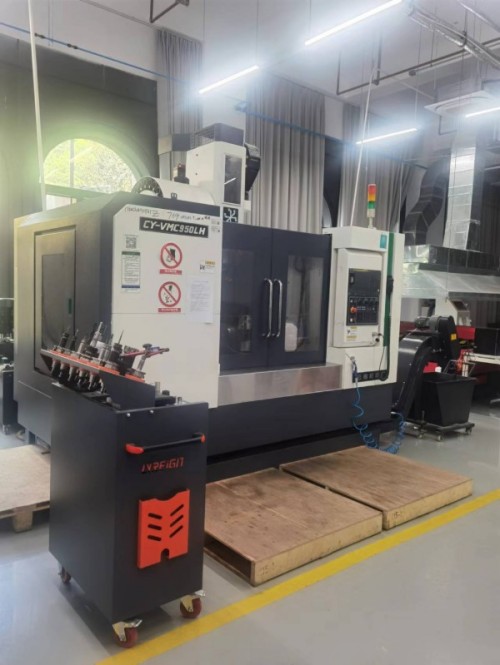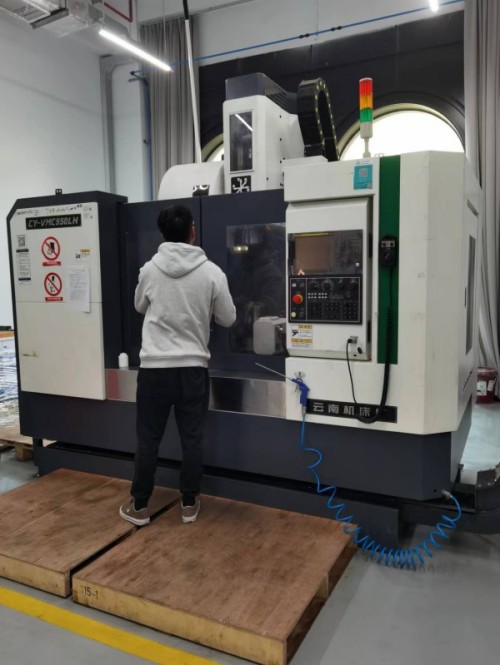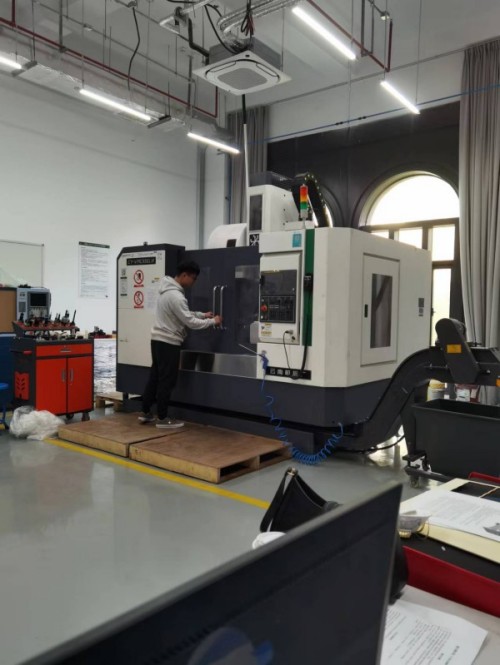Dry machining, an essential process in the manufacturing industry, offers numerous benefits, including reduced environmental impact and improved operational efficiency. However, it also presents unique challenges that engineers and machinists must navigate. In this article, we will explore 30 common problems encountered in dry machining and their effective solutions.

1. Rapid Tool Wear
Problem: Tools can wear out quickly due to high temperatures and friction during dry machining.
Solution: Optimize cutting parameters such as feed rates and cutting speeds. Choose high-quality tool materials designed for dry machining. Regularly inspect and replace tools as needed.
2. Tool Edge Chipping
Problem: The edges of cutting tools may chip, leading to compromised work quality.
Solution: Reduce cutting depth and feed rate. Utilize coated tools to enhance wear resistance. Ensure precise tool alignment and setup.
3. Dimensional Tolerances Exceeded
Problem: Machined parts may not meet specified dimensions, affecting overall quality.
Solution: Regularly calibrate the machine. Secure workpieces firmly during machining. Measure frequently to make necessary adjustments.
4. Workpiece Deformation
Problem: Thermal effects during machining can lead to distortion of the workpiece.
Solution: Optimize the machining sequence, starting with stable features. Use adequate fixturing to support the workpiece. Perform shape correction if needed after rough machining.
5. Poor Surface Finish
Problem: Achieving the desired surface roughness can be challenging.
Solution: Adjust feed rates and cutting speeds. Select suitable tool geometries for the material being machined. Conduct finishing passes with appropriate parameters.
6. Unusual Cutting Sounds
Problem: Strange noises during cutting can indicate problems.
Solution: Check for tool wear and damage. Ensure proper workpiece and fixture stability. Adjust cutting parameters as necessary.
7. Tool Breakage
Problem: Tools may break under excessive load or improper conditions.
Solution: Reduce cutting depth and load. Ensure proper tool material selection. Improve cooling measures to reduce thermal stress.
8. Inaccurate Workpiece Positioning
Problem: Workpieces may not be positioned correctly, leading to machining errors.
Solution: Redesign fixtures to ensure accurate positioning. Regularly inspect and secure fixtures and workpieces. Establish clear reference points for alignment.
9. Uneven Coolant Application
Problem: Inconsistent coolant application can lead to overheating.
Solution: Inspect and clean the coolant delivery system. Adjust nozzle angles and positions for better coverage. Ensure a sufficient supply of coolant.
10. Programming Errors
Problem: Mistakes in programming can lead to machining failures.
Solution: Conduct thorough program reviews and simulations. Use software to verify machining paths. Provide regular training for programming personnel.
11. Machine Malfunctions
Problem: Mechanical issues can interrupt machining processes.
Solution: Schedule regular maintenance for machines. Document and analyze failure causes to implement corrective actions. Develop emergency repair procedures.

12. Loss of Tool Position
Problem: Losing the reference position for tools can disrupt machining.
Solution: Regularly save tool data and positions. Utilize tool identification systems. Conduct routine checks and recalibrations.
13. Fixture Interference
Problem: Fixtures may interfere with the machining process.
Solution: Redesign fixtures to avoid interference. Test fixture compatibility with tools. Use shorter tools where feasible.
14. Unstable Cutting Forces
Problem: Fluctuating cutting forces can affect machining quality.
Solution: Regularly inspect tool condition. Implement appropriate cutting parameters. Ensure uniform material properties in workpieces.
15. Extended Machining Cycle Times
Problem: Prolonged machining cycles can reduce efficiency.
Solution: Optimize machining paths to minimize idle time. Select high-performance tools. Plan machining sequences effectively.
16. Vibrations During Machining
Problem: Vibration can lead to poor machining results and tool damage.
Solution: Enhance machine rigidity. Check the stability of workpieces and fixtures. Adjust feed rates and cutting parameters to mitigate vibrations.
17. High Coolant Temperatures
Problem: Excessive coolant temperatures can compromise machining performance.
Solution: Increase coolant flow rates and amounts. Utilize suitable coolant types. Regularly maintain the cooling system to prevent blockages.
18. Ineffective Cooling
Problem: Poor cooling can lead to overheating and tool wear.
Solution: Clean and maintain the cooling system. Ensure proper coolant concentrations and quality. Adjust nozzle positioning for optimal cooling.
19. Interrupted Program Execution
Problem: Unexpected program interruptions can halt production.
Solution: Ensure stable power supply. Regularly check machine components. Establish protocols for program recovery.
20. Chip Buildup on Workpieces
Problem: Chips may adhere to the workpiece surface, affecting quality.
Solution: Increase coolant application. Optimize tool geometry for chip removal. Regularly clean chips during machining.
21. Inconsistent Machining Precision
Problem: Fluctuations in machining precision can lead to quality issues.
Solution: Regularly calibrate machinery. Ensure proper fixture design. Monitor temperature variations affecting machining.
22. Contamination of Coolant
Problem: Contaminated coolant can impact machining quality.
Solution: Replace coolant regularly. Store coolant properly to prevent contamination. Maintain a clean machining environment.

23. Slow Program Execution
Problem: Inefficient programs can lead to longer machining times.
Solution: Streamline program structures to reduce redundancy. Utilize efficient algorithms. Upgrade control systems as necessary.
24. Fast Wear of Finishing Tools
Problem: Tools used for finishing may wear out quickly.
Solution: Choose appropriate tool materials and coatings. Adjust cutting parameters to optimize performance. Consider multiple light passes.
25. Overheating of Machine Bearings
Problem: Excessive heat can lead to bearing failure.
Solution: Regularly lubricate and inspect bearings. Ensure machines operate within load limits. Utilize suitable lubricants for high-temperature environments.
26. Automatic Tool Change Failures
Problem: Automatic tool changers may fail to operate correctly.
Solution: Inspect the mechanical system for issues. Verify programming instructions for accuracy. Conduct regular maintenance on tool changers.
27. Spark Generation During Machining
Problem: Sparks can pose safety risks and affect work quality.
Solution: Adjust cutting conditions to minimize spark generation. Ensure proper material compatibility. Monitor tool temperature closely.
28. Surface Contamination Post-Machining
Problem: Workpieces may have residues after machining.
Solution: Use appropriate cleaning equipment. Select suitable coolants to minimize residue. Maintain cleanliness in the machining area.
29. Control System Error Alarms
Problem: Alarms from control systems can disrupt operations.
Solution: Regularly inspect hardware and software systems. Verify parameter settings for accuracy. Develop rapid response protocols for alarms.
30. Excessive Heat During Machining
Problem: High temperatures can damage tools and workpieces.
Solution: Adjust cutting parameters to reduce heat generation. Increase coolant supply. Select appropriate tool materials and geometries.
Conclusion
Dry machining presents several challenges that can impact productivity and quality. By identifying common problems and implementing effective solutions, manufacturers can enhance their machining processes. Continuous monitoring, regular maintenance, and strategic planning are essential for successful dry machining operations. As technology evolves, staying informed about advancements in tooling and machining strategies will further optimize efficiency and quality in dry machining environments.If you need related products, please feel free to contact us:https://www.xendolltools.com/
 Oct 30, 2024
Oct 30, 2024
 Xendoll
Xendoll
 1021
1021



 Show all our samples
Show all our samples
 Provide you with a free quote
Provide you with a free quote
 Answer all the questions you may have
Answer all the questions you may have
 Guided installation and other options
Guided installation and other options